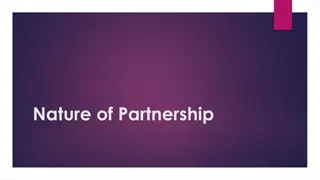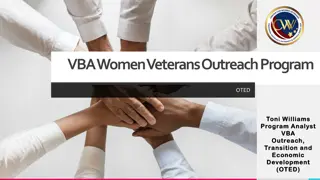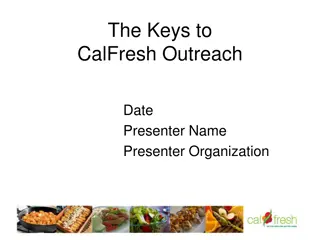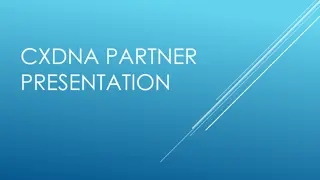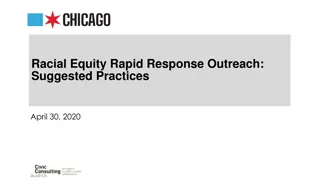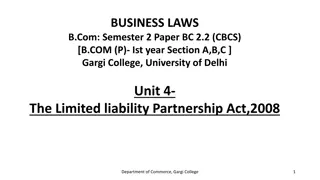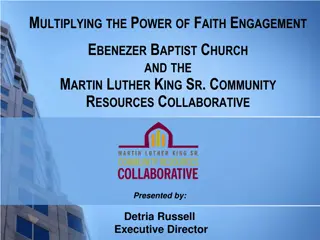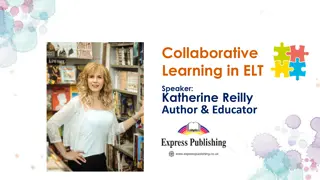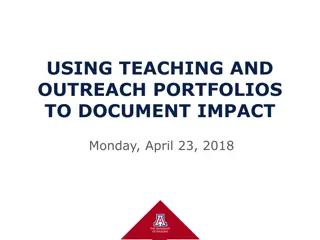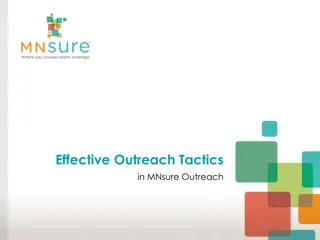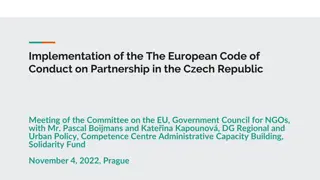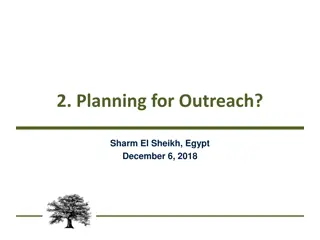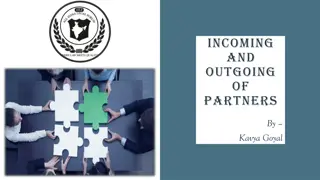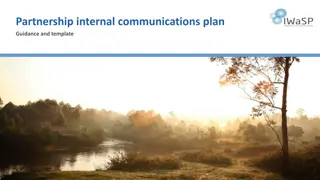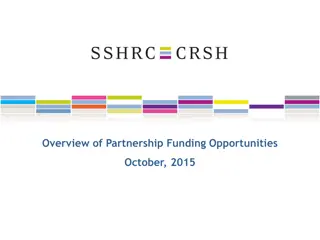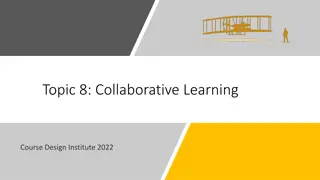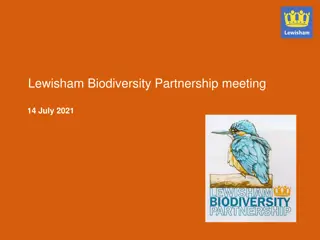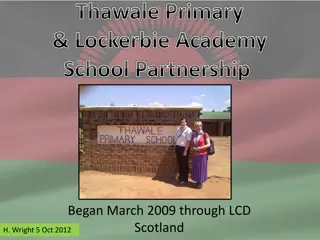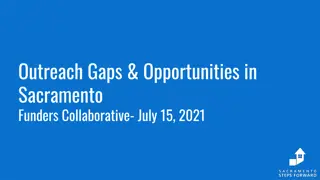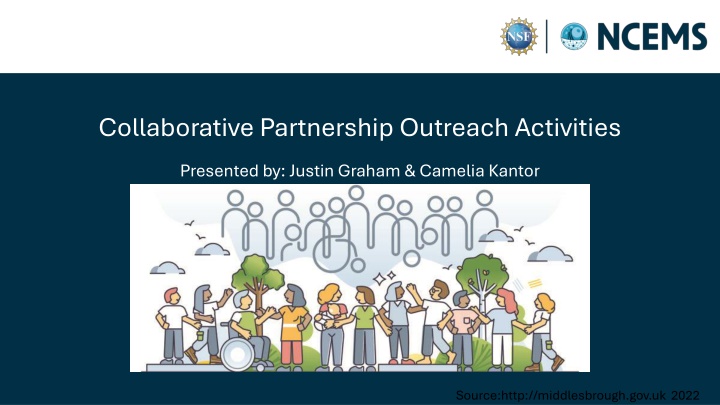
Strategic Implementation Plan for Collaborative Partnership Outreach Activities
Explore the strategic implementation plan for collaborative partnership outreach activities presented by Justin Graham & Camelia Kantor. Learn about the values, goals, and partners involved, as well as the steps to accomplish these goals through equitable mentoring, leveraging scientific expertise, and recruitment plans. Access research infrastructure, promote diversity, and engage in a wide variety of scientific collaborations.
Download Presentation

Please find below an Image/Link to download the presentation.
The content on the website is provided AS IS for your information and personal use only. It may not be sold, licensed, or shared on other websites without obtaining consent from the author. If you encounter any issues during the download, it is possible that the publisher has removed the file from their server.
You are allowed to download the files provided on this website for personal or commercial use, subject to the condition that they are used lawfully. All files are the property of their respective owners.
The content on the website is provided AS IS for your information and personal use only. It may not be sold, licensed, or shared on other websites without obtaining consent from the author.
E N D
Presentation Transcript
Collaborative Partnership Outreach Activities Presented by: Justin Graham & Camelia Kantor Source:http://middlesbrough.gov.uk 2022
Strategic Implementation Plan Feedback Session Outline SESSION TIME SESSION TIME ACTIVITY ACTIVITY DESCRIPTION DESCRIPTION DURATION (MIN) DURATION (MIN) Session leads provide background and summary of NCEMS goals in topic area 00:00 00:12 Introduction Introduction 12 Group Group Discussion Discussion 00:12 00:24 Groups of 6 form and consider 2-3 questions 12 Groups of 6 report back to entire session; one group member uses Qualtrics form to record responses 00:24 00:37 Report Back Report Back 13
Values, Goals, and Partners OUR VALUES: Through collaboration, consultation, and leadership with students, faculty, staff, and community partners, NCEMS will drive innovation, focus on outcomes, draw from the full diversity of the nation, and position NCEMS as a model center of openness and collaboration to all. OUR GOALS: Fostering and curation of wide-ranging scientific collaborations Creation of suitable mentoring and educational research programs Enhancing institutional partnerships with collaborative partners. OUR PARTNERS: .and open to others!
How to Accomplish the Goals Access to research infrastructure Access to research infrastructure - Access to cloud-agnostic cyberinfrastructure (CyVerse) - Training in essential elements of data science, machine learning, and statistics - Nationwide opportunities to participate in NCEMS research remotely Equitable Mentoring Ecosystem Equitable Mentoring Ecosystem - Apply for Summer Research Opportunities - Participate in the National Remote Research Experience (NRRE) Leverage diverse scientific expertise Leverage diverse scientific expertise - Form a Working Group - Hold a Catalyst Meeting - Become a Visiting Scientist - Sabbatical at NCEMS - Become a NCEMS Postdoctoral Fellow MSI partner institutions (Have access to all NCEMS resources and allocated spots in the USIP) MSI partner institutions (Have access to all NCEMS resources and allocated spots in the USIP)
Plans for Recruitment Leverage our personal networks National meetings ABRCMS SACNAS MS/CC NCEMS website and listserv NCEMS social media X (Twitter) Email outreach to colleges and universities across the country
Collaborative Partnership Outreach Discussion Questions 1. How can NCEMS ensure that participation in its programs and access to its resources translate into tangible career development and research advancement for faculty, researchers, and students? 2. What specific types of support (e.g., research funding, mentorship, access to specialized tools, networking opportunities) would be most valuable for faculty and students from all backgrounds and institutions? Be specific. 3. What barriers do scientific communities face related to research participation, and how can we address them to provide better support and promote collaboration?


